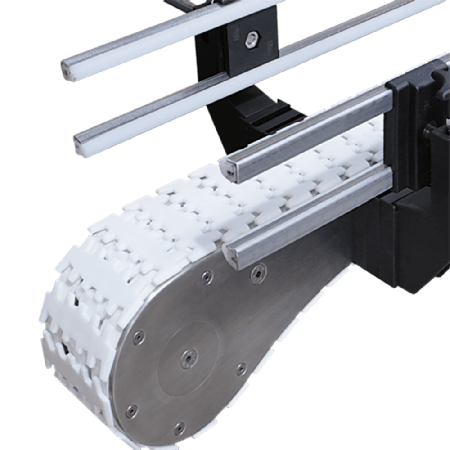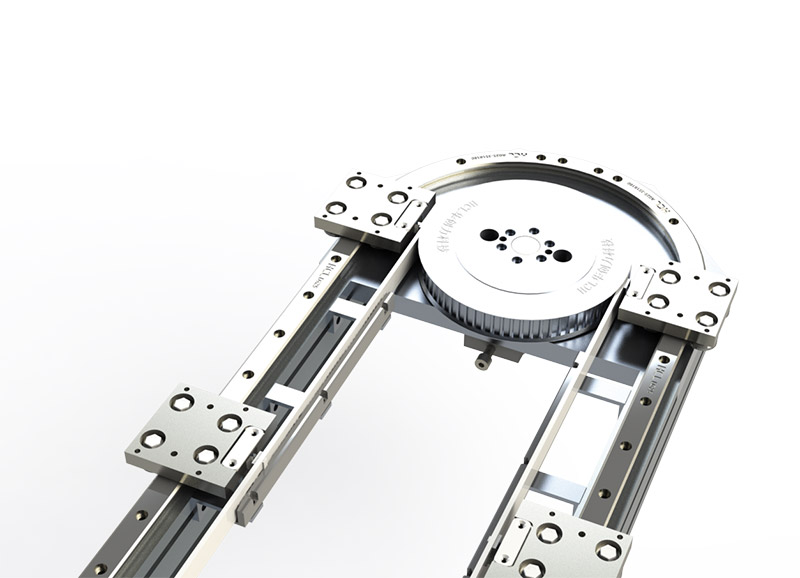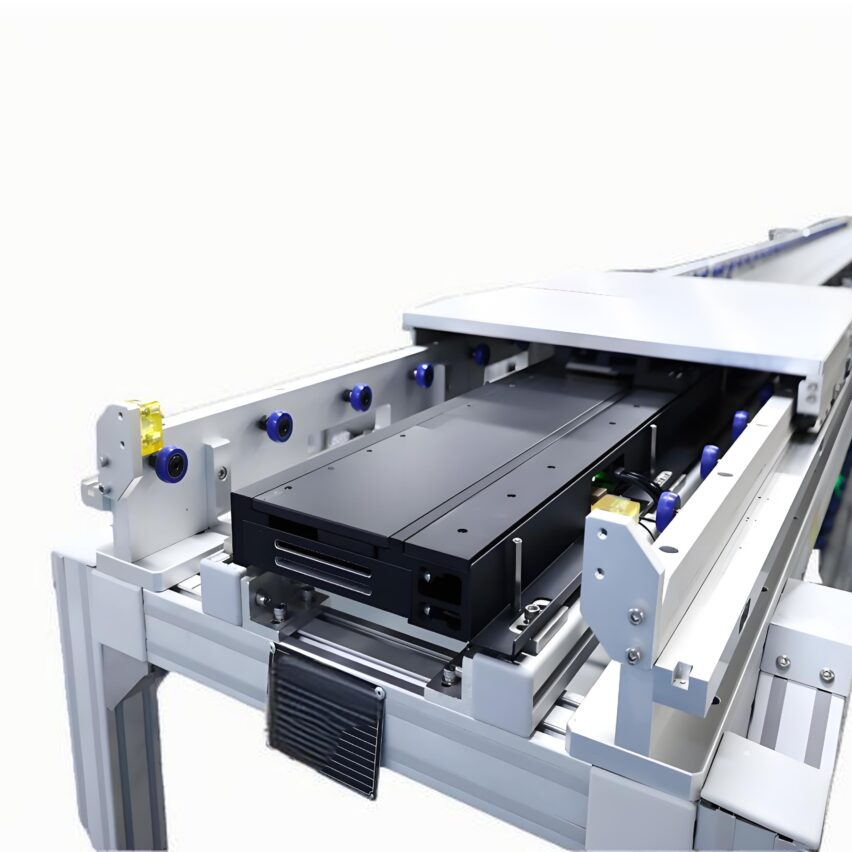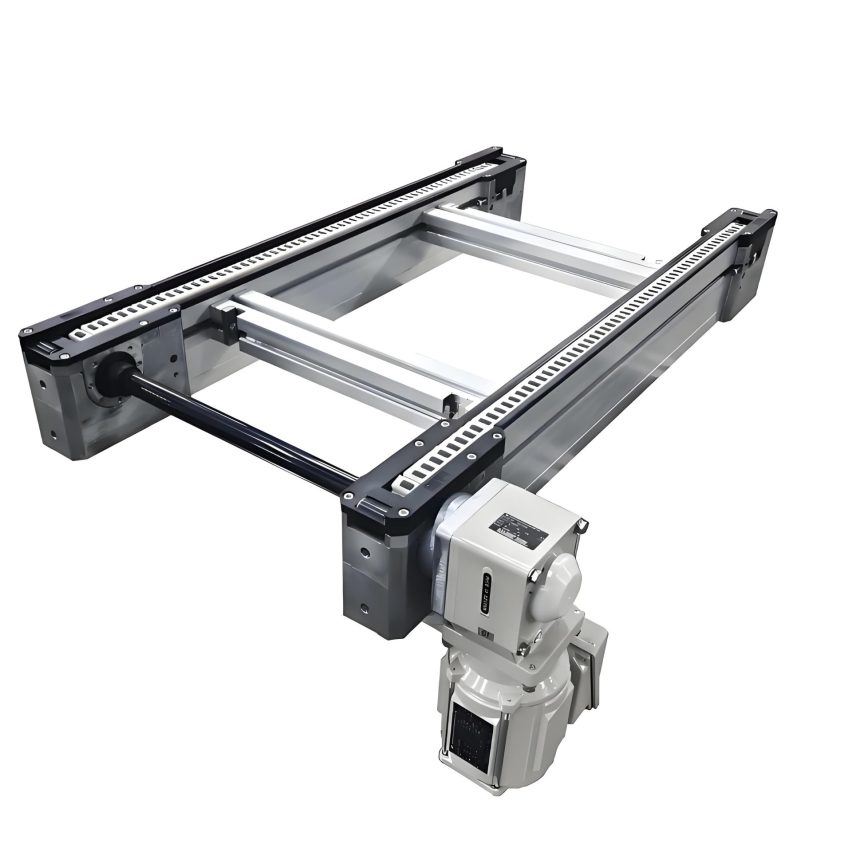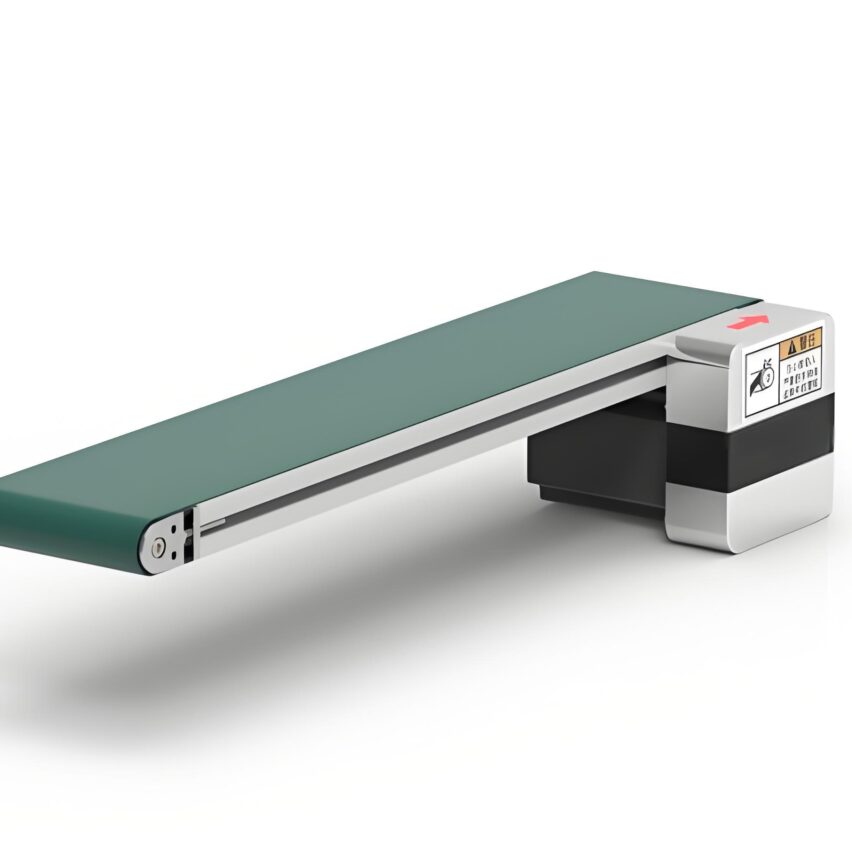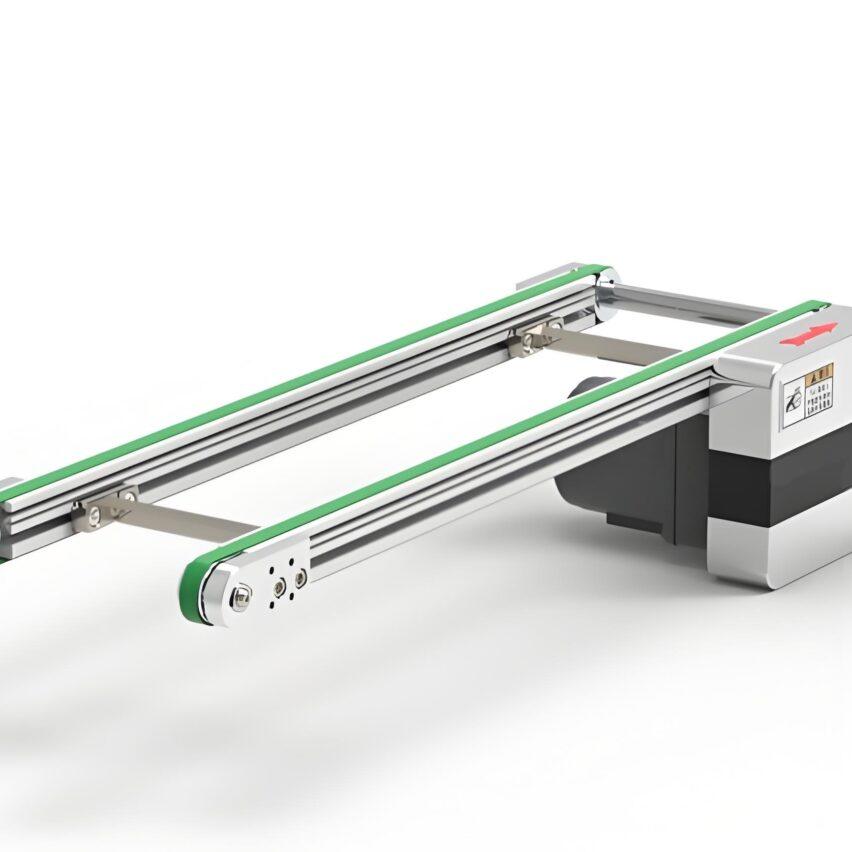I. Technical principles and structural innovations
The heart of the Speed Chain assembly line is its unique"Design for Growth". By means of the mechanical structure of special chains (e.g. triple-speed chains), the workpiece-carrying plate can be moved several times as fast as the chain when the chain is running at a regular speed. The physical principle can be simplified as:
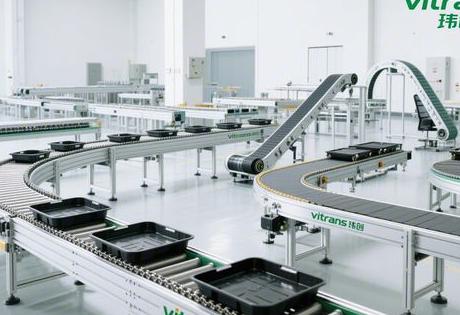
- Roller-roller diameter ratio: The formula for the speed of the work plate is chain speed x (1 + D/d), where D is the roller diameter and d is the roller diameter. The 2-3 times speed increase is achieved by increasing the D/d ratio.
- 积放功能: Accurately control the workpiece plate to pause at any station by blocking cylinder, and automatically resume the flow after the operation is completed, realising a flexible balance between continuous and intermittent.
The double-layer structure passesSpatial layering strategyBreaking through efficiency bottlenecks:
plaintextmake a copy ofUpper level: production line full of tooling boards → station 1 → station 2 → ... → finished product off the line ↓ Plate return machine (jacking and panning mechanism) ↑ Lower level: line for return of unloaded workpieces ←... ←The design allows for the automatic return of empty panels through the lower or vertical lifts.Reduced footprint of 40% production lineIt also eliminates the time loss of manual board return.
II. Industry applications and efficiency changes
In the electronics manufacturing industry, a television assembly line after the use of a double-layer multiplier chain:
- Electrical Work Plates: Integration of conductive wheels and sliding contact wires to realiseIn-line power-on test and agingThe individual testing session is eliminated.
- Modular Compatibility: Switching production lines of mobile phone motherboards and TV motherboards within 2 hours by replacing the jigs and fixtures of the tooling boards to meet the demand of multiple varieties and small quantities.
The case of automotive battery module assembly highlights its heavy-duty performance:
- Carbon Steel Roller ChainCarrying 500kg modules, with jacking and panning machine to achieve cross-line transfer.
- Mitsubishi PLC control systemPrecise control of the 0.5 second response stopper ensures accurate stopping of the high temperature gluing process.
III. Intelligent maintenance and safety norms
routineTwo-tier mechanismis the key to continued operation:
- Daily spot check for post workers: Check for foreign objects in the chain, emergency stop button status, no-load test run
- Dedicated in-depth maintenance: Weekly testing of motor temperature rise, chain tension (sagging ≤ 2%), roller wear
Innovative designs for safety and security address traditional pain points:
- Embedded Chain LayoutAluminium profile rail wraps around the chain, exposing only 2mm of rollers and eliminating the risk of clothes getting caught in the chain.
- Dual mode control: When switching between manual commissioning and automatic operation, the power box access control system is forced to cut off the power to avoid misoperation with electricity.
IV. The game of customisation versus genericity
Despite significant off-standard attributes (85% items need to be customised), recent years have seen the emergence ofCompatibility Breakthrough::
- Interface standardisation: The drive motor is adapted to Siemens/Mitsubishi multi-brand flange, and the control box is reserved for Profinet protocol interface.
- modular libraryPre-set 300-1200mm width modules, assembling the production line like building blocks.
Successful practice in automotive plants confirms its value.The same conveyor line carries three types of components, namely engine blocks, battery packs and seat frames, within two years by replacing the tooling plates., saving $2.7 million in equipment replacement costs.
V. Future trends and technical challenges
I think the next generation of multiplier chains will move towards"Intelligent perception."Evolution:
- Self-adjusting tensioning system: Monitoring of chain stress by strain gauges, automatic compensation of thermal expansion and contraction deformation
- Predictive maintenance: Built-in vibration sensors in the rollers, AI pre-determines the replacement cycle and reduces sudden downtime
However, technical bottlenecks remain.The limit of growth has reached a critical pointWhen D/d>4, the noise of the chain will increase. When D/d>4, the centrifugal force of the roller leads to increased chain jitter, a laboratory data show that: 3.5 times the speed of noise up to 82dB, far more than the current 75dB national standard. This requires a breakthrough in materials science - carbon fibre rollers or a new direction.
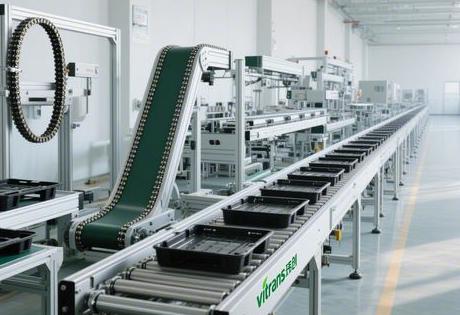
Self-questioning: a breakdown of the core issues
Q1: Why do electronics factories prefer double-layer to single-layer multiplier chains?
A: At the heart ofSpace reuse and cycle efficiencyThe mobile phone assembly line usually requires 18 workstations. Mobile phone assembly line usually requires 18 stations, single-layer line length of about 35 metres, while the double-layer structure of the upper and lower layers of the arrangement of 9 stations, the length of the compression of 20 metres, while eliminating the manual return to the board link (accounting for operating time 15%).
Q2: How does the material of the work plate affect the performance of the system?
A: There are three key selection criteria:
- Electrostatic sensitive areas(e.g. chip assembly): Bakelite boards are used, with a surface resistance of 10⁶-10⁹Ω.
- overloaded scenario: 1.2mm stainless steel plate laser welded, load capacity up to 800kg.
- Cost-sensitive production lines: PVC (1/5th the price of stainless steel) but lasts about 2 years.
Q3: Which industries are not suitable for this technology?
A: Three types of scenarios need to be evaluated with caution:
- micrometer scale positioning(e.g. wafer processing): multiplier chain ±0.5mm error out of tolerance
- Highly corrosive environments(e.g. pickling process): even 316L stainless steel chains are only resistant to pH>3.
- Discrete production: The payback period often exceeds 3 years for a monthly production of <5000 pieces.




